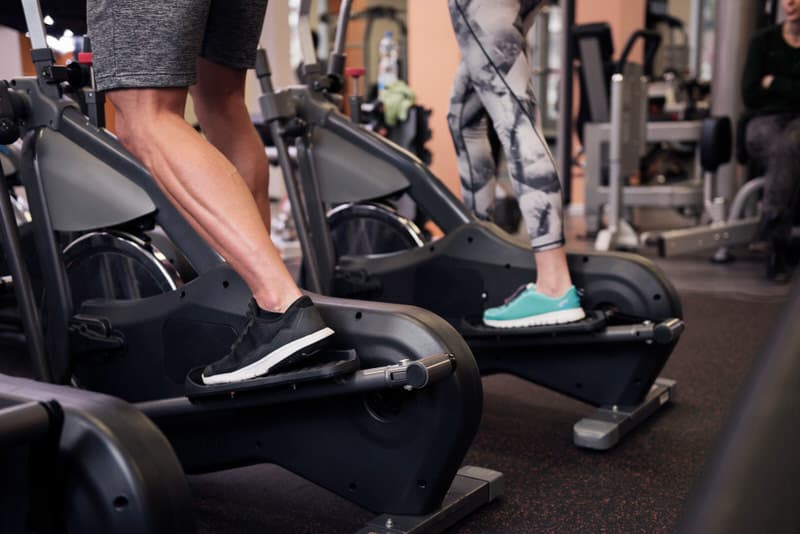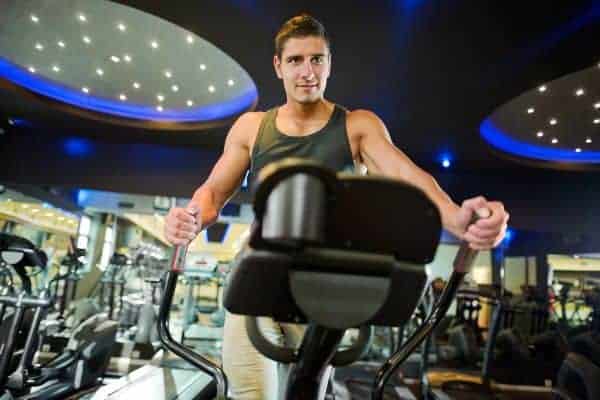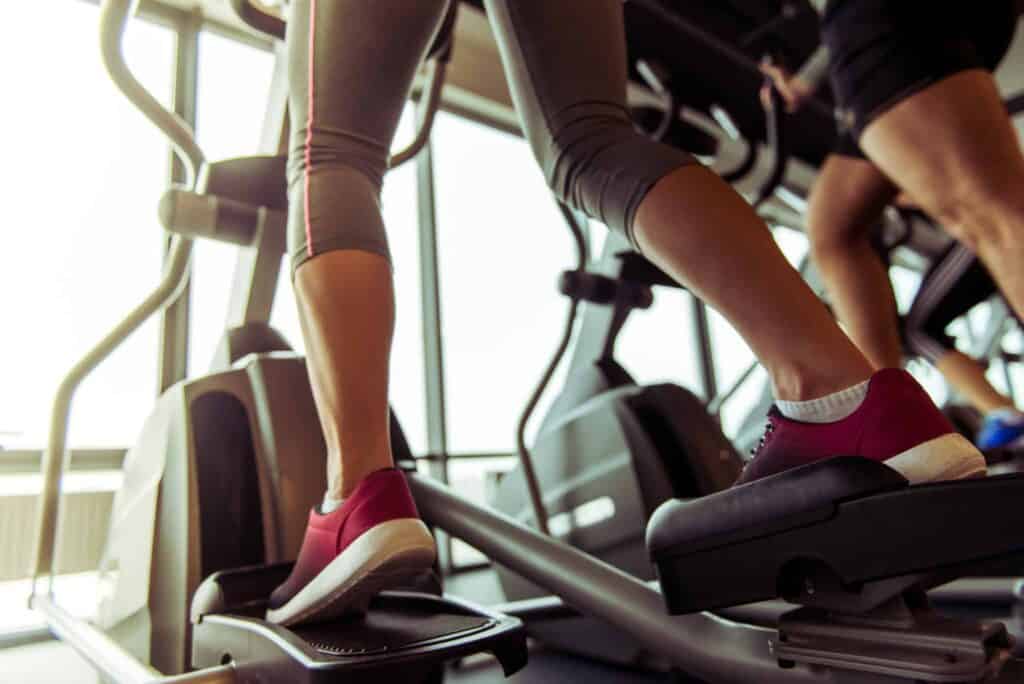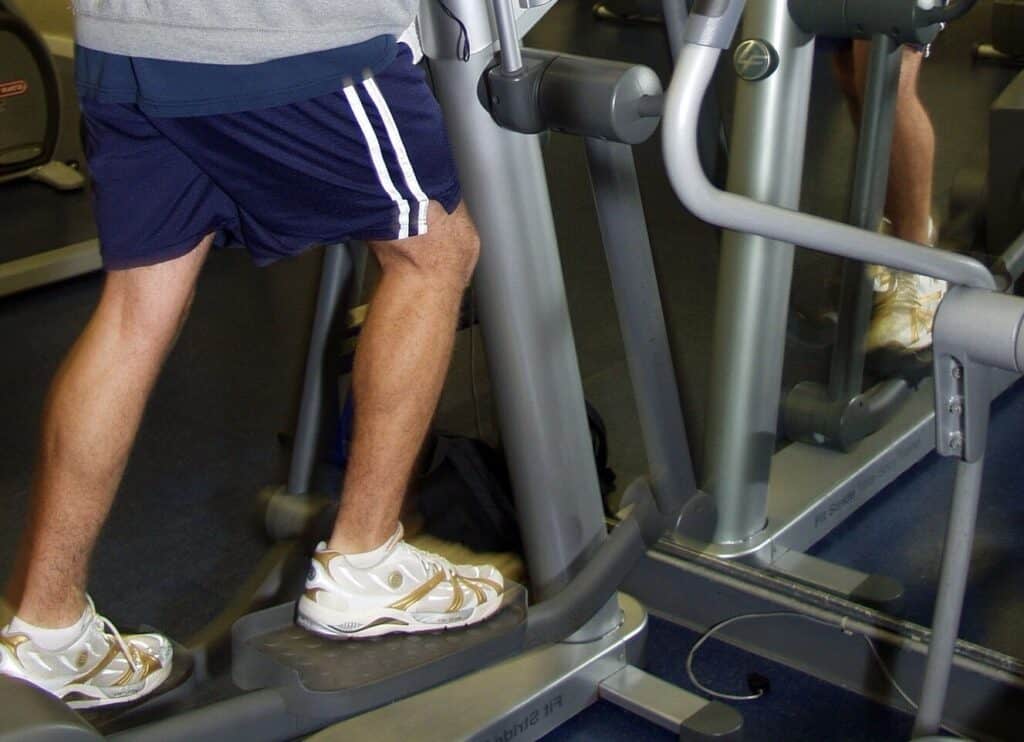Elliptical Backwards
The goal of an elliptical trainer (cross trainer) is to create a full body cardiovascular workout that is low impact but simulates a gliding movement. The biggest benefit is that it targets pretty much every muscle in the body. Shopping for cross trainers? Check out our roundup of the best cross trainers on the market.
But what happens when you use the elliptical backwards? Can you use the elliptical backwards? You can pedal backwards on the elliptical! Going forwards engages your hamstrings and glutes while backwards engages your quads and calves. Moving the pedals in different directions targets different muscle groups depending on the direction in which you pedal.
It is assumed that when you pedal backwards on an elliptical you are targeting your hamstrings and glutes, but surprisingly this isn’t the case. Let’s look into what happens to your body when you pedal backwards on a cross trainer.

Going Backwards on a Cross Trainer
It’s believed that when elliptical trainers were first created, the original manufacturers stumbled across the notion of being able to pedal the machine backwards. Because it was uncommon they used this as a unique selling point.
One of the sales reps at Reebok quoted that pedalling backwards on a cross trainer was not a purposeful design feature but “a byproduct of the belt drive mechanism design”.
Due to the dynamic movement the elliptical offered, trainers and professionals became aware that the backwards motion on an elliptical had an effect on the muscle tone in the legs.
Not only this but it creates a variety of patterns while training, this variety helps stimulate the muscles. Pedalling backwards causes you to bring your hips and glutes forwards which helps your posture. However, if you suffer from conditions like shin splints, its not a good idea to pedal backwards as this will put my emphasis on the shins when driving down the pedals.

Is it Better to go Forward or Backward on Elliptical?
A 2005 study looked into the different effects of pedaling forwards and backwards. The research looked into specific muscle recruitment of each motion by examining the 4 major muscle groups in the legs (quads, glutes, calves and hamstrings). During a cross trainer session the researchers used Electromyography (EMG) to compare stride direction and 3 different incline settings.
The results of the study showed that the hamstring was more active during the forward motion on the elliptical trainer. While the quads were more active while pedalling backwards. The researchers concluded that “…EMG activity was statistically significantly higher for the rectus femoris in backward striding when compared to forward striding.
No other statistically significant differences for the main effects of grade or direction, nor for any interactions, were noted within the muscle groups.”
In short the quadriceps are significantly stimulated when pedalling backwards on an elliptical machine.
What Muscles Does The Elliptical Work Going Backwards?
Focus on the Quads
The results of the study are promising for those who are looking to add something different to their workout and want to target their quadriceps. By pedalling backwards on an elliptical you will be toning the quad which is the most prominent muscle in the middle of the thigh.
Not only this but the thigh helps knee extension and flip flexion which gives the legs a sculpted and muscular look.

Another reason to pedal backwards is if you are recovering from a hip or hamstring injury. Because pedalling backwards puts so much emphasis on the quad your overall hip joint motion is decreased while maintaining speed and endurance.
Interval training on Elliptical Using Forwards/Backwards Motion
Using an elliptical for interval training brings plenty of cardio benefits similar to running. But how about incorporating reverse striding to add some variety and add more emphasis to the quads?
For example if you are pedalling forwards for 1 minute you can use the backwards pedal as your active rest period for 30 seconds. Do this for 20 minutes for a total leg workout.
You can increase the work/rest ratio as required but using this as an outline could be a good plan for someone that wants to incorporate both pedalling motions into their routine.
Does Pedaling Backwards on an Elliptical Work Your Abs?
During the forward movement on the elliptical predominantly engages the abdominals. As your legs move to the front of the body from behind your pelvic muscles are activated to bring the legs forward, these pelvic muscles include the abdominals.
You can engage the abdominals further by tightening the core, but remember to maintain breathing throughout.

Elliptical Backwards Knees
Does Pedaling Backwards on an Elliptical Hurt Your Knees?
While pedalling in a backward motion does stimulate the quadriceps it does seem like it could be a risk to the knees as the load is forced at the front of the joint. But pedalling backwards can provide benefits to the knee.
The American College of Sports Medicine found that pedalling the elliptical machine backwards has benefits to the knees. The researchers found that of the 39 people with knee injuries who pedaled backwards gained more strength in the hamstrings and quadriceps.
These muscles support the knee joint. This is one way to prevent a knee injury by strengthening the muscles around the joint. As we’ve established the quadriceps are stimulated during the backwards pedaling meaning that it reduces the amount of stress the knee encounters while pedaling backwards.
It is highly recommended to get used to the forward motion first before advancing to pedalling backwards. This will help your muscles and joints adapt to the motion and won’t put any unnecessary pressure on the joints.
If your machine isn’t noisy take advantage of pedalling backwards as the motion will be fluid.
Cross Trainer Backwards
Using the cross trainer backward motion provides good variety to your overall leg workout while reducing stress on the joints. It isn’t something I would recommend to work on its own but useful to supplement a traditional elliptical programme.
It is perfectly safe and is still easy on the joints. A study by Official Research Journal of the Department of Kinesiology found that there is no metabolic difference between pedalling forwards or backwards which shows that it provides a beneficial cardio workout.
If you want a fun and easy way to target the quads then give pedalling backwards a try!
An ex-triathlete, fitness coach and writer with a Masters in Sports Physiology. Fitness is my passion and I've had my fair share of home fitness equipment tried and tested!


4 Comments